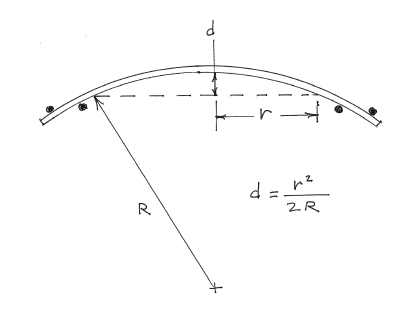Sorry I can't help with the radius dish question but for the go bars you can use fiberglass rods used for kite building! 3/16" to 5/16' would do!
Or you can buy them for Blues Creek Guitars already made and save the hassle! Fiberglass can splinter and be a pain....it also smells horrible when you cut it!
BTW....if you go the "do it yourself" way don't cut the rods with a saw or scissors or cutter for that matter

Make sure you use a high speed cutter like a cutting wheel on a Dremel or it will cause the rods ends to split and it will be a mess!

 These radius gauges have so many uses around the shop, I find a new use for it every time I pull one out! After using my Brace Maker jig, I sand the brace in one of my dishes to get the spherical shape of the dish onto the bottom of the brace. Then I use my gauge to verify the radius. You can also check the top and back rims to see how accurate you got your sides profiled. Many more good uses, like making rails for making dishes. Good luck!
These radius gauges have so many uses around the shop, I find a new use for it every time I pull one out! After using my Brace Maker jig, I sand the brace in one of my dishes to get the spherical shape of the dish onto the bottom of the brace. Then I use my gauge to verify the radius. You can also check the top and back rims to see how accurate you got your sides profiled. Many more good uses, like making rails for making dishes. Good luck!
